The overall functional literacy rate for the MIMAROPA Region in 2024 is 70.7 percent or seven out of ten MIMAROPANs
The MIMAROPA Region has an overall functional literacy rate of 70.7 percent, slightly lower than the national average of 70.8 percent. This percentage reflects the proportion of the population aged 10 to 64 years who can read, write, compute, and comprehend.
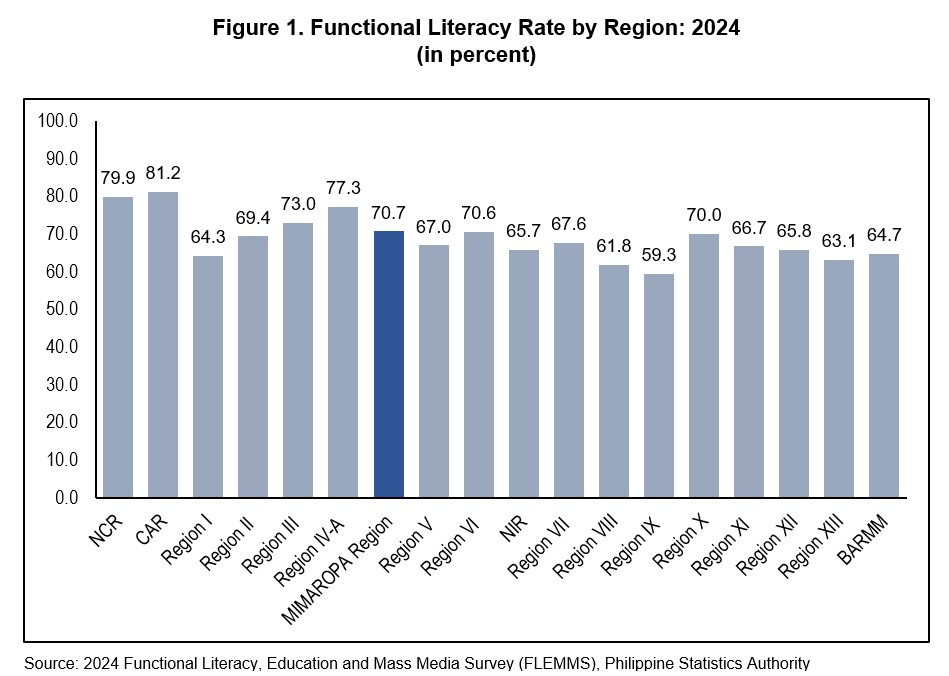
Among the population aged 10 to 64 years, the MIMAROPA Region recorded a functional literacy rate of 70.7 percent which is higher than the overall average across the 17 regions, which stands at approximately 68.7 percent, indicating that MIMAROPA exceeds the national average by about 2.0 percentage points.
When compared to other regions in Luzon, MIMAROPA’s functional literacy rate of 70.7 percent is higher than Region I (64.3%), Region II (69.4%) and Region V (67.0%), but lower than Region III (73.0%), Region IV-A (77.3%), the National Capital Region (79.9%), and the Cordillera Administrative Region (81.2%).
Relative to the Visayas island group, MIMAROPA has a higher functional literacy rate than all Visayas regions. Specifically, it surpasses Region VI (70.6%), NIR (65.7%), Region VII (67.6%), and Region VIII (61.8%).
Compared to the regions in Mindanao, MIMAROPA consistently shows a higher functional literacy rate. It exceeds Region IX (59.3%), Region X (70.0%), Region XI (66.7%), Region XII (65.8%), Region XIII (63.1%), and the Bangsamoro Autonomous Region in Muslim Mindanao or BARMM (64.7%).
Among 1.21 million males in MIMAROPA aged 10 to 64 years, 66.8 percent are functionally literate. For 1.15 million females in the same age group, 74.8 percent are reported to be functionally literate. The data shows a higher percentage of functional literacy among females compared to males in the region.
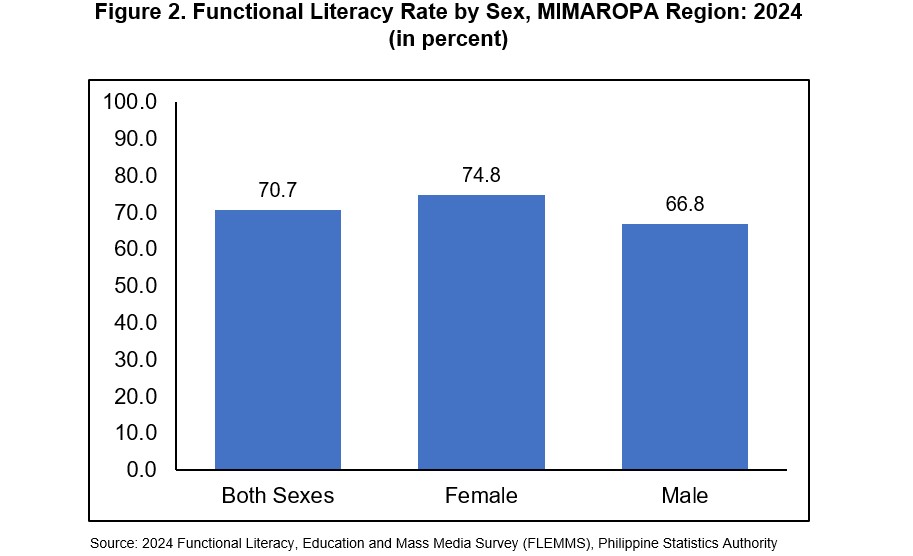
The City of Puerto Princesa registered the highest functional literacy rates at 83.2 percent.
Being the only highly urbanized city (HUC) in the region, the City of Puerto Princesa achieved the highest literacy rate exceeding all the provinces in the region, with 83.2 percent of its population or 192.77 thousand individuals being functionally literate.
Among the provinces of MIMAROPA, Romblon has the highest functional literacy rate with 175.16 thousand individuals or 81.9 percent. Marinduque follows at 73.1 percent or 125.75 thousand of its population. Oriental and Occidental Mindoro follows at 69.6 percent and 68.8 percent, respectively. In contrast, Palawan recorded the lowest rate at 64.5 percent or 449.51 thousand of its population.
Across all provinces, females consistently show higher literacy rates than males.
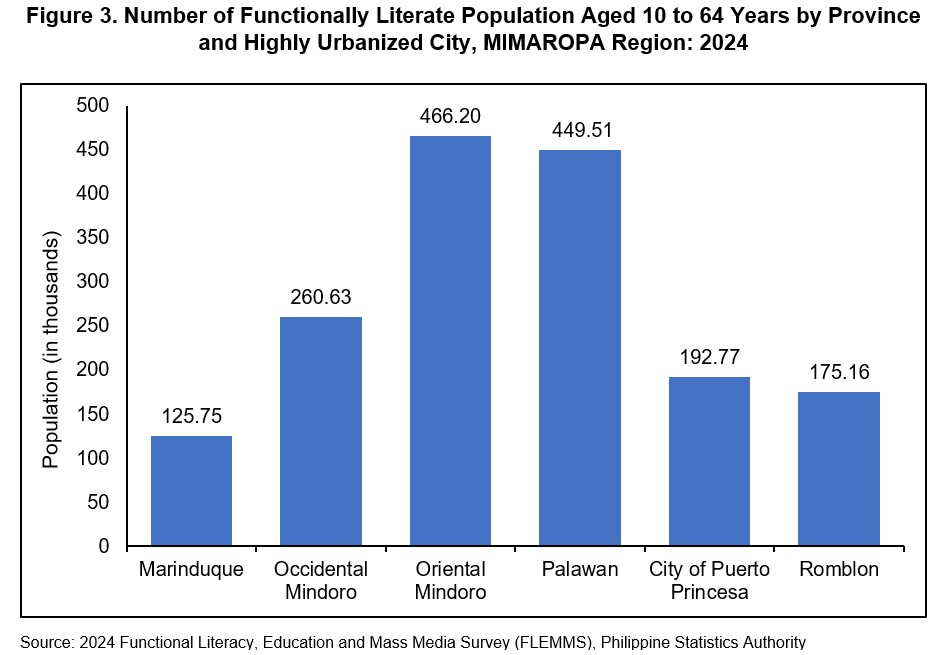
Individuals with college level or higher education show the highest functional literacy rate at 88.4 percent. This is followed by those with post-secondary non-tertiary education, who have a functional literacy rate of 84.1 percent.
Those who attained short-cycle tertiary education have a functional literacy rate of
77.0 percent, while individuals with a high school level of education show a slightly lower rate of 75.8 percent. For individuals whose highest educational attainment is elementary, the functional literacy rate drops to 52.5 percent, showing a significant decrease compared to those who reached higher levels of education. The lowest functional literacy rate, at 2.5 percent, is recorded among individuals with no grade completed.
The data also shows a trend of increasing functional literacy rates alongside higher educational attainment.
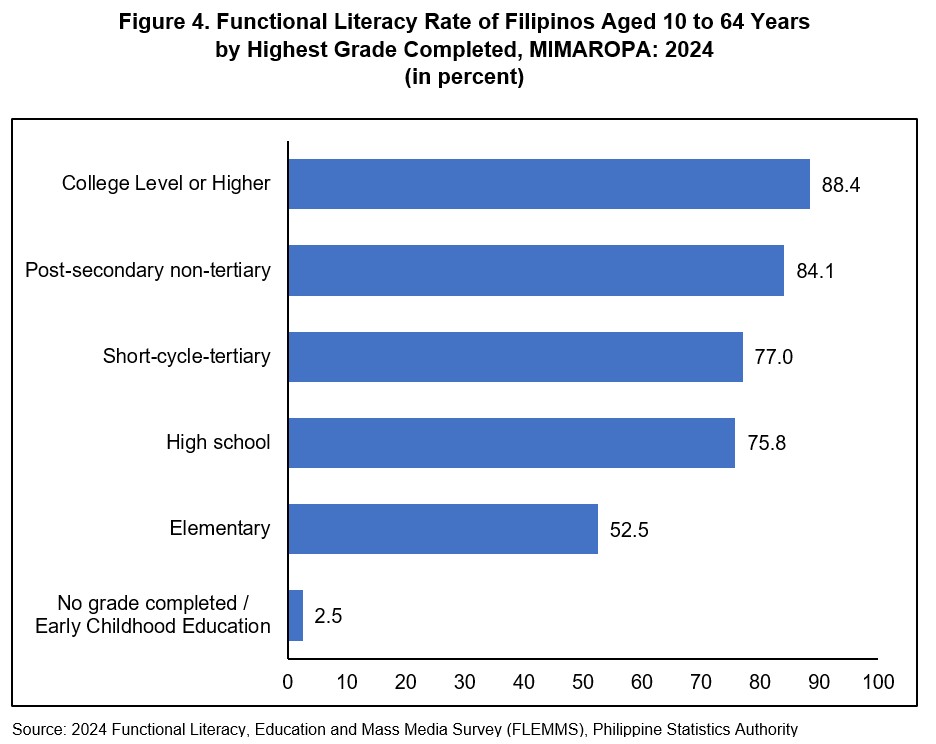
The highest functional literacy rates are recorded among the younger adult age groups.
The 20 to 24 age group leads with a rate of 81.0 percent, followed closely by the 15 to 19 age group at 78.8 percent. These two groups are the only age ranges that significantly exceed the regional average. The 25 to 29 age group reports a slightly lower rate at 73.9 percent but remaining above the overall regional rate. The 30 to 39 age group, with a functional literacy rate of 71.2 percent, is closely aligned with the regional average and marks the beginning of a gradual decline observed in the older age brackets.
On the other hand, the 10 to 14 age group shows a functional literacy rate of 65.1 percent, which is lower than the regional average. Meanwhile, the older age groups show a steady decline in functional literacy. The 40 to 49 age group has a rate of 68.1 percent, followed by 62.3 percent in the 50 to 59 age group. The lowest functional literacy is observed in the 60 to 64 age group, with a rate of 57.7 percent.
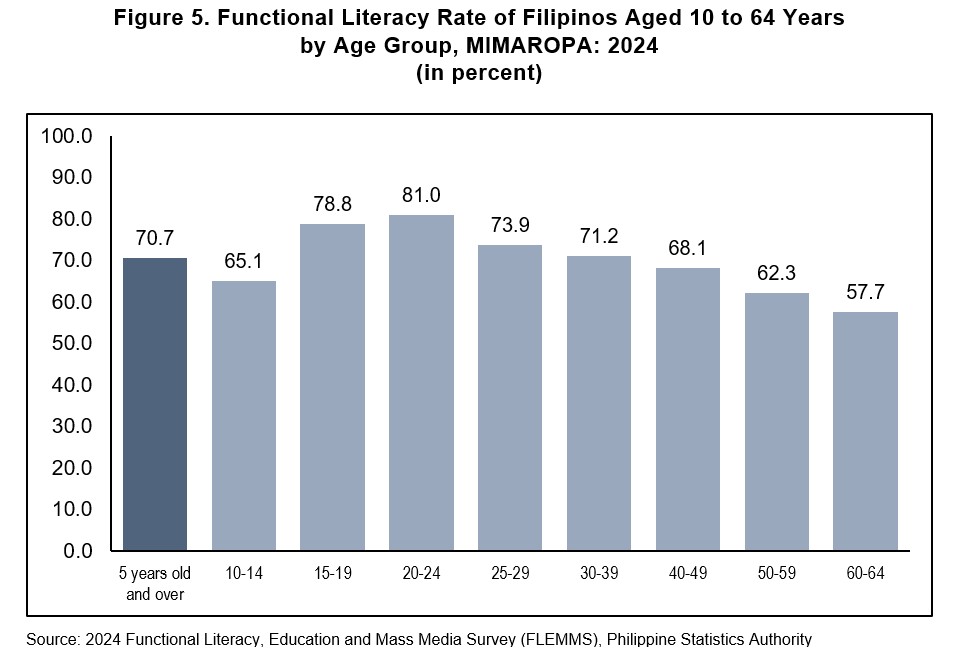
(SGD) LENI R. RIOFLORIDO
Regional Director
MLLM / OHG / TJMDM

